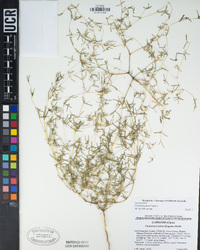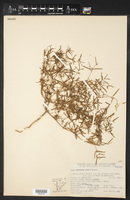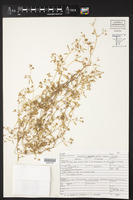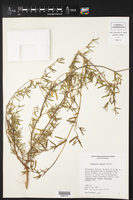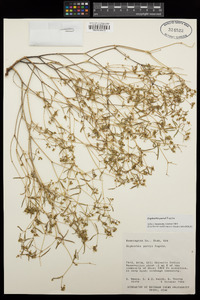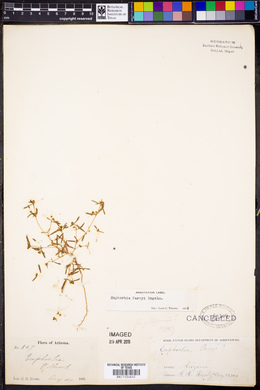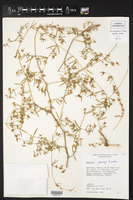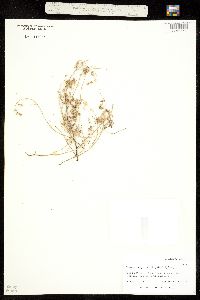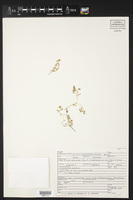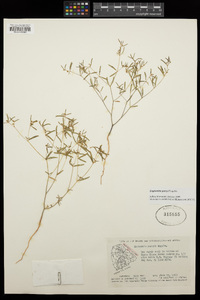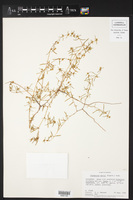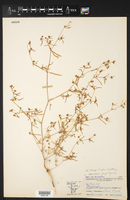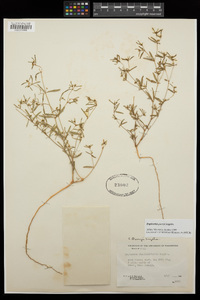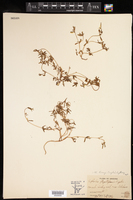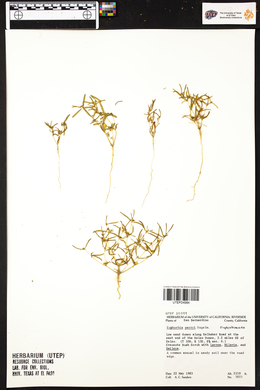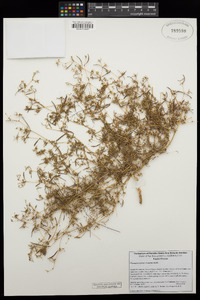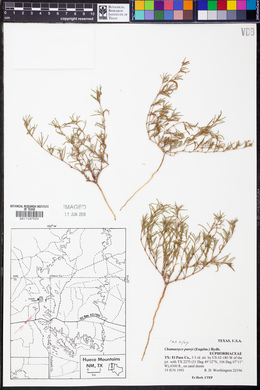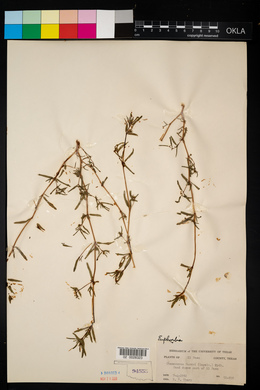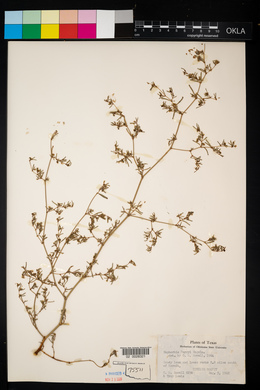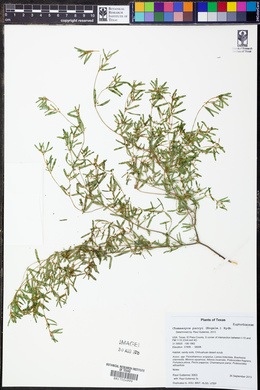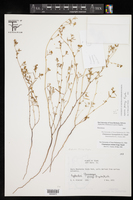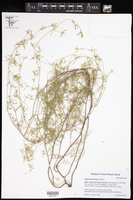Chamaesyce parryi
|
|
|
|
Family: Euphorbiaceae
Parry's sandmat, more...Parry's Sandmat, Parry's spurge
[Euphorbia parryi Engelm.] |
FNA 2016, Allred and Ivey 2012, Jepson eFlora (Keil et al. 2017) Duration: Annual Nativity: Native Lifeform: Forb/Herb General: Annual herb from a taproot; stems usually prostrate (rarely ascending-erect), 5–85 cm long; herbage glabrous. Leaves: Opposite along the stems, on short petioles 1-2 mm long; blade linear to narrowly oblong, usually 5-25 mm long and 2-5 mm wide, with a symmetric base (or slightly asymmetric), entire margins, and a conspicuous midvein; stipules distinct, 1 mm long, usually lacerate and divided into 2 or more slender segments. Flowers: Has the highly modified flower structure characteristic of Euphorbias. Structures called cyathia appear to be individual flowers, but are composed of fused-together bracts forming a cup (involucre), with peripheral nectary glands which are often subtended by petal-like bracts called petaloid appendages. Within the cup there is a ring of inconspicuous male flowers, each reduced to a single stamen. Out of the middle protrudes a single, stalked female flower which lacks petals. In E. parryi, the cyathia (flower structures) are solitary or clustered in leaf axils near branch tips; Involucres are broadly cup-shaped or bell-shaped, 1.5 mm high, and glabrous, with 4 reddish-pink to greenish-yellow concave oblong glands around the edge, each with a greenish to white petaloid appendage which forms a narrow margin around the gland (sometimes rudamentary); 40-55 staminate flowers. Fruits: Capsules ovoid-globose, 3-celled, 2 mm high, glabrous; containing 3 broadly ovoid seeds, 1.5 mm long, brown-and-white mottled because of irregularly loose and tight outer covering, rounded-angular in cross section, smooth or inconspicuously roughened. Ecology: Found on sand dunes and other sandy habitats, below 7,500 ft (2286 m); flowers May-June. Distribution: CA and NV to CO, NM, and TX; south to n MEX. Notes: This species belongs to the Chamaesyce subgenus of Euphorbia. Some treatments, even recent ones, continue to treat Chamaesyce as a separate genus even though molecular evidence places it within Euphorbia. Chamaesyce spp are distinct based on their leaves which are always opposite and and often have asymmetric bases; cyathia (flower structures) in leaf axils, not at branch tips, and usually with petaloid appendages; and stipules present and not gland-like. E. parryi is distinguished by being a glabrous (hairless) annual with a leggy, prostrate and spreading growth form; oblong leaves 5-25 mm long, more than three times as long as wide, with smooth (entire) edges, and mostly symmetric bases; seed pods 2-3 mm high; and cyathia (flower-like structures) with narrow green to white petaloid appendages that form a narrow margin on the outside edge of the glands they are attached to. Euphorbia missurica is most similar to E. parryi but has a more upright growth form and more conspicuous petaloid appendages. It is wise to make a collection whenever ID to species is needed, as Chamaesyces are difficult to identify in the field, and multiple species of the genus will commonly grow side-by-side. Ethnobotany: Unknown Etymology: Euphorbia is named for Euphorbus, Greek physician of Juba II, King of Mauretania; parryi honors Charles Christopher Parry (1823-1890), a British-American botanist and mountaineer who worked on the US-Mexico boundary survey as a surgeon and botanist. Editor: AHazelton 2017 Plant: Annual; stem ascending to prostrate, glabrous; sap milky Leaves: cauline, opposite, short-petioled, 5-28 mm; stipules separate, linear; blade linear, glabrous, tip acute to obtuse, margin entire INFLORESCENCE: flower-like, generally 1 per node; involucre 1.5-2 mm, bell-shaped, glabrous; glands 1-4, < 0.5 mm, oval; appendage narrower than gland, entire, white Flowers: Staminate flowers 40-55, generally in 5 clusters around pistillate flower, each flower a stamen; Pistillate flower: 1, central, stalked; ovary chambers 3, ovule 1 per chamber, styles 3, divided 1/2 length Fruit: capsule, 2 mm, spheric, lobed, glabrous; Seed ± 2 mm, ovoid, 3-angled, smooth, brown to white Misc: Sand dunes; < 700 m; May-Jun |
|
|
|










